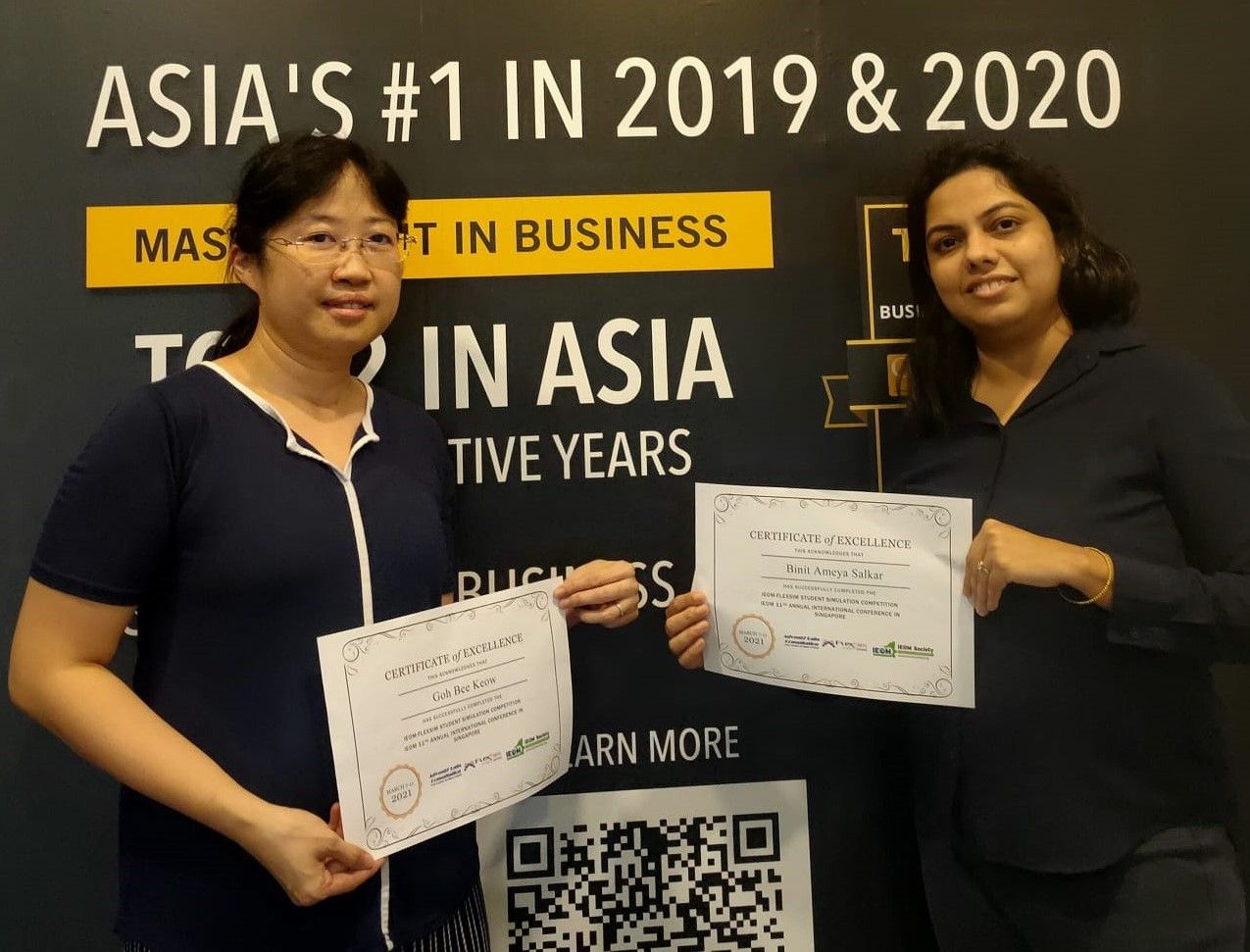
What is the competition about?
The IEOM-FlexSim Student Simulation Competition is an international simulation competition hosted by the Industrial Engineering and Operations Management Society and FlexSim Software Products, Inc. to provide students with an opportunity to demonstrate their problem-solving, presentation, and discrete-event simulation modelling and analysis skills. The top 4 teams shortlisted from the first round were provided an opportunity to present their results in the IEOM Annual Conference held in Singapore virtually on March 9-11, 2021. Due to the COVID-19 situation, the competition was conducted virtually via Zoom.

What did the competition involve? What was your project about and what did you hope to achieve with your project?
The case study involved optimisation of the process flow within an Adventure Land theme park. The objective of our project was to simulate the current long waiting line at the park’s tram ride and provide an alternative to reduce the waiting time. We used the Flexsim software to entirely design and build simulation models to identify the extent of the wait time before coming up with proposed solutions to alleviate the challenge. This was followed by building dashboards to monitor the changes over time including analysis and evaluation of the efficacy for each of the proposed solutions.
We conducted experimental runs for the simulation models to help the park management identify an envelope of solutions for resource optimisation. Finally, we included recommendations to improve the overall adventure park experience of the visitors as we do realise that waiting for popular attractions are inevitable.
All in all, we hope to be able to provide the adventure park management a clear analysis of the problem and our proposed solutions that were feasible to undertake including intangible recommendations to improve visitor experience.
There were several deliverables that constituted the competition submission. This included the simulation models of existing and proposed solutions, written paper on our project as well as a 5-minute video for the judges to evaluate.
Who were your team competing with? Where were the teams from?
According to the organiser, there were over 100+ participating student teams who came from various academic institutions all over the world. These included Singapore, Saudi Arabia, Japan, Philippines, Indonesia, Bangladeshi and others. They were of various operations management and industrial engineering background. We were impressed by their showmanship as well as their presentation.
What was the judging criteria in selecting winners? Who were the judges?
The first round of the judging criteria included the assessment of the model validity aspects like the physical, logical and data aspects along with the relevant assumptions. The focus was clearly on the problem statement, analysis as well as the solutions proposed. There were also the aesthetics aspect that was part of the judging as well.
The judges for shortlisting the finalists initially involved the organisers from IEOM and Flexsim. During the final round and presentation on the 9th March, an NUS professor Prof Gary Tan and Flexsim Mr Kenny Mcleod constituted the final round judging panel. The results were announced on the 11th March during the conference closure.
What benefits do each project bring to society/the community/researchers? (or any other stakeholder)
Simulation modelling projects like these allow us to frame and systematically approach the problem. It provides graphical analysis for sound decision-making. Risks and costs are key considerations which can impact society and community overall. Both of us are from diverse professional backgrounds and yet we were able to come together and solve it from a collective approach.
Could you/your team members provide a quote on your key takeaway/how MITB has helped you in this competition?
We were just a two-member, all-women team and frankly, we may not have been able to reach the finishing line if not for the mutual support we had for each other. There were several roller coaster moments that we had doubted whether we could even complete the submission. We took a huge leap of faith, believed in the impossible and persevered with hard work. Eventually this became a reality!
Our deepest appreciation to our SMU supervisor Professor Tan Kar Way for her strong support and guidance during the late-night consultations, which were contributory to the win. Her vast experience in simulation modelling has provided us the assurance that not all simulation results may turn out to be favourable and to rethink holistically to address the problem.
MITB had provided us the much-needed foundational competencies to perform the necessary simulation and analytics. We had previously taken Prof Tan’s module Process Analytics using Simulation during our MITB candidature and that was instrumental in helping to prepare us fundamentally for the competition. Coupled with the synthesis of learnings from other modules in MITB, we were able to dissect the problem easily and address with relevant assumptions including applying the necessary analysis to derive insights for sound decision-making.